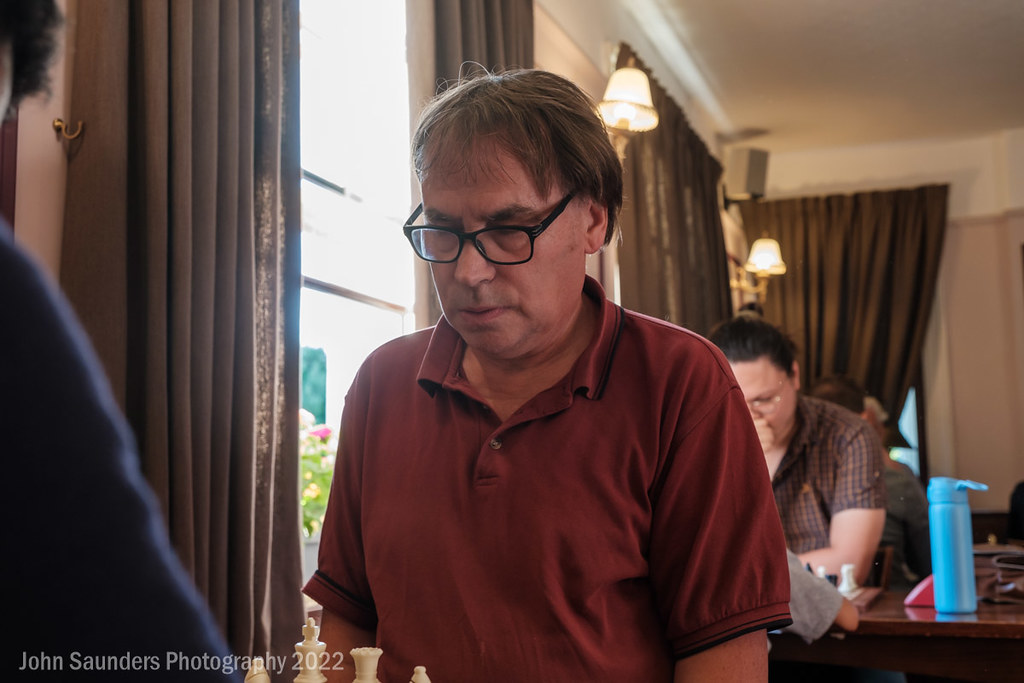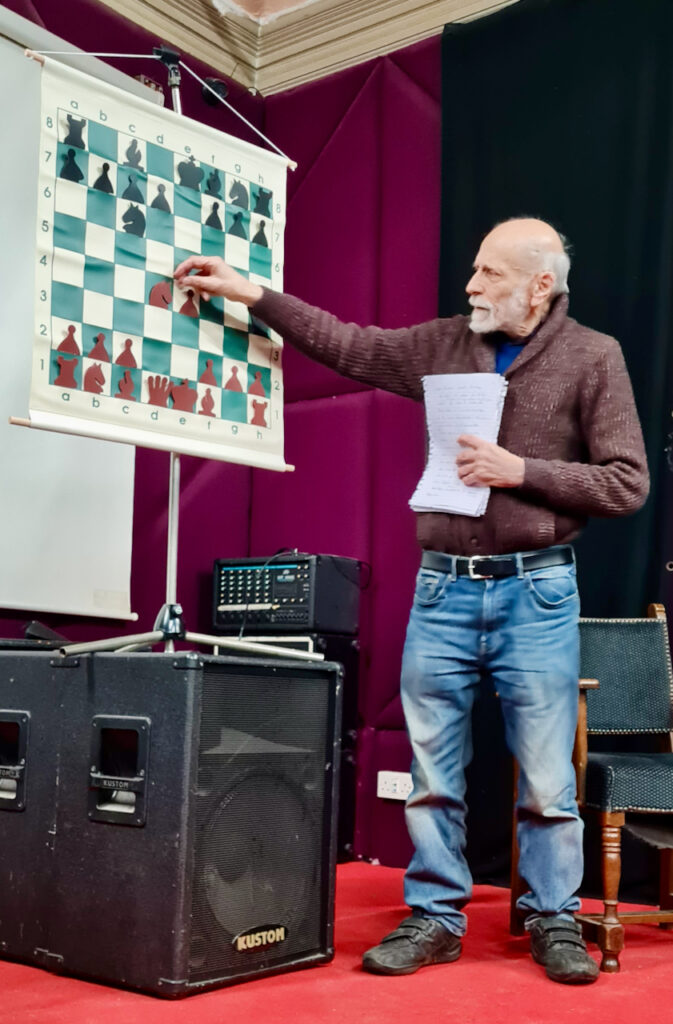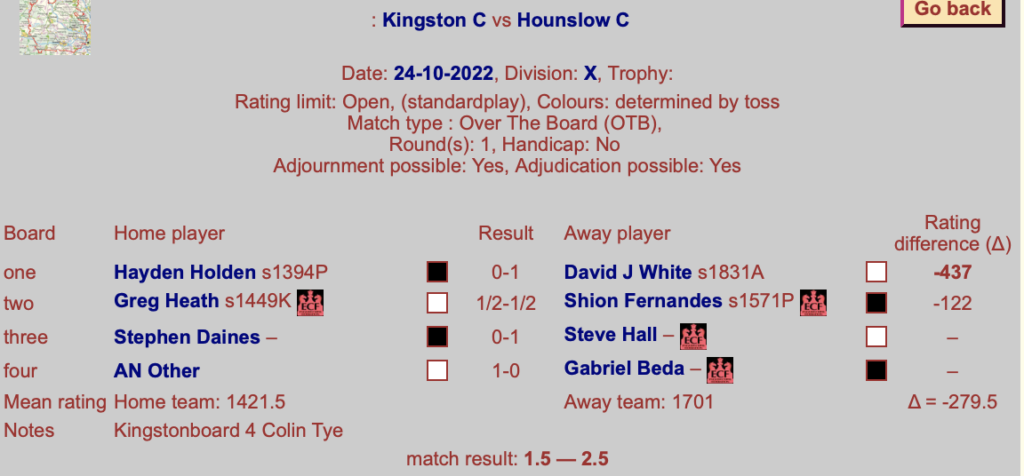Thames Valley League division 1 match played at the Adelaide, Teddington, on 8 November 2022
The clash between Kingston A v Richmond A was eagerly anticipated, and it fully lived up to the billing. On board 1, Kingston’s David Maycock was White against IM Gavin Wall. As usual, Maycock fell into time trouble, but even playing on a 10-second increment doesn’t faze him and he got the better of the tactical melee which erupted in the middle game. Both kings were in imminent danger of being compromised, but Maycock’s attack was just the speedier and Wall resigned.
Lengthy analysis by the two players in the bar afterwards suggested Wall’s resignation was premature – retrospectively, he thought he had drawing chances. Maycock concurred, though he described the position that would have resulted if Wall had carried on as “pleasant”. Maycock has started playing for Wall’s Richmond team in the London League, so the analysis was mutually generous. These two clubs, based on either side of Kingston bridge, are so close that there is a certain incestuousness among the personnel, though happily that doesn’t dampen the competitive edge.

Elsewhere, things were a little less frenetic. On board 6, Peter Andrews with Black won a pawn out of the opening in a Queens Gambit Accepted and never really let go of the advantage. His opponent, Richmond captain Maks Gajowniczek, had compensation in the form of a slight initiative, but Andrews quickly neutralised it, traded down to a knight endgame, won a second pawn and smoothly converted, though he complained later that in his urge to simplify he had missed the chance to win a piece and thus wrap up the game a good deal earlier.
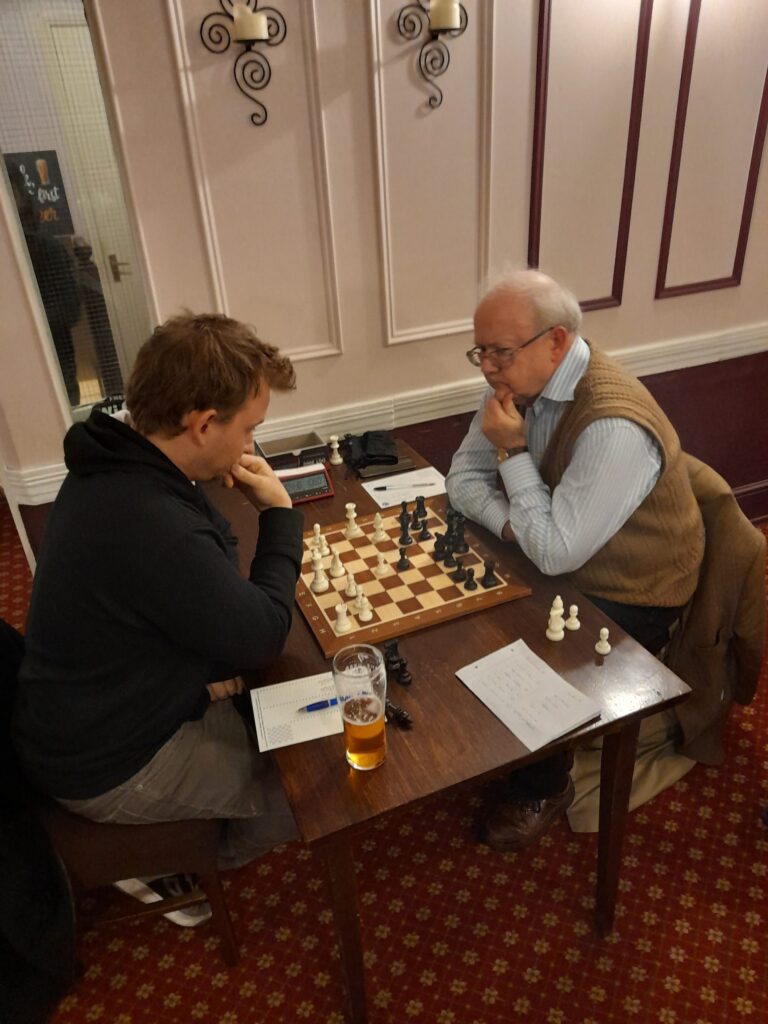
On board 3, Kingston newcomer Silverio Abasolo won a tremendous attacking game against Andrew Hebron, building up an overwhelming position with the Four Pawns Attack against Hebron’s King’s Indian. Playing with great verve, Abasolo dominated a series of sharp tactical battles, won the exchange and forced resignation in 25 moves. An exemplary display by a player who promises great things for Kingston.
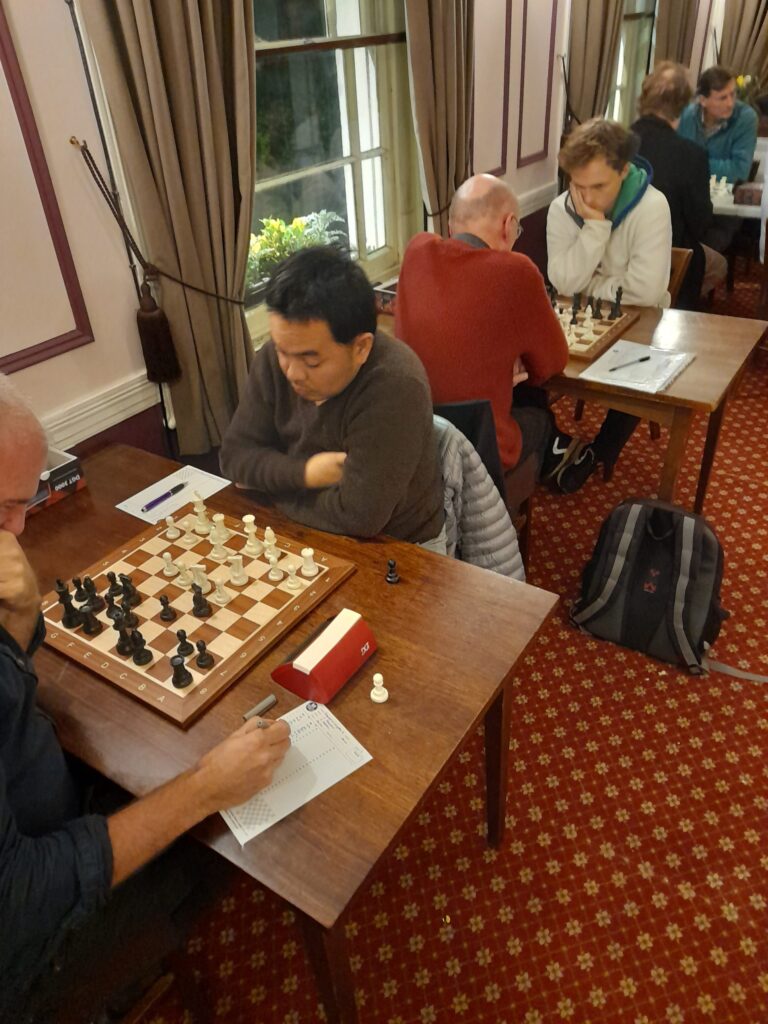
Vladimir Li, playing Black on board 4, also built up a powerful pawn centre against the experienced Chris Baker, though Baker fought back stoutly and had a chance to equalise when Li offered a knight sac. Baker turned it down – taking it would have led to an attack that looked dangerous but seems to result in a perpetual – and thereafter in a time scramble his position steadily deteriorated. In the end he lost on time, but the situation was already irretrievable.
On board 5, Kingston captain David Rowson took on the fast-rising Maxim Dunn, whose recent record in a variety of leagues is tremendous. Dunn, playing a Sicilian Dragon, activated his pieces powerfully, lined up his rooks on the g-file and was bearing down on White’s king. He was also dominating the a8-h1 diagonal with queen and bishop, but made one fatal mistake – putting his bishop, which Rowson had dislodged from d5, on h1, assuming his attack was unstoppable. Rowson manoeuvred his f-pawn to break the connection between queen and bishop, and the castled king was able to capture the stranded piece.
“My win was (without false modesty) almost totally undeserved, as I played the opening and early middle game horribly,” said Rowson later, “but the trick which enabled me to win was unusual and quite interesting, I think.” Even after the loss of Dunn’s bishop the win was far from facile, but eventually Rowson was able to trade down to a winning endgame.
Richmond’s sole point in a 5-1 defeat came on board 2 where Mike Healey, who plays for Kingston in the Surrey League but opts for Richmond in the Thames Valley (more incestuousness!), defeated Peter Lalić. Lalić played the Scandinavian and built up a nice edge in the opening. But Healey fought back with his usual energy and established a rook on the seventh rank, while Lalić was saddled with a bizarre pawn structure – he had both doubled and tripled pawns, and all seven of his pawns were isolated. Is this a record?
Despite this strangest of pawn structures, the engine still gives Lalić a tiny edge, but the position was horribly difficult to play with time short and Healey was able to get a pawn to d7. Lalić was forced to give up rook for knight to stop the pawn queening, and, though he fought on with characteristic vigour (no premature resignations here), his bishop was no match for Healey’s rook in the endgame.
A fascinating game in a match that had a great deal of complex and high-class chess – much of it above the head of this hard-pressed reporter. Any IM-strength players who wish to become correspondent for this website, please get in touch. Usual rates apply.
Stephen Moss


